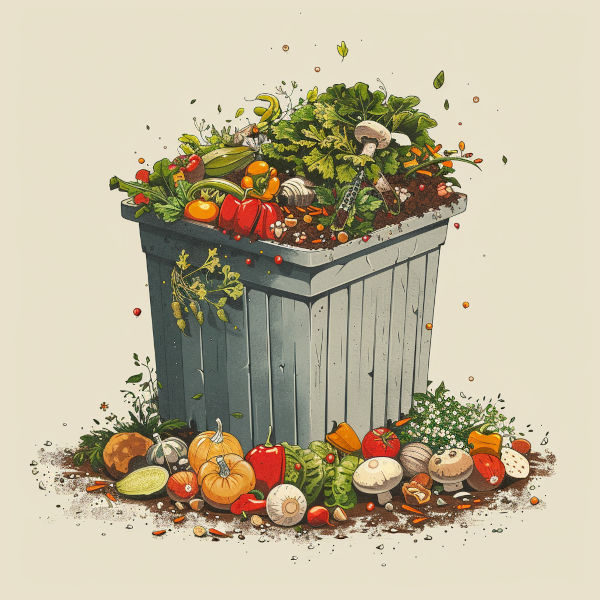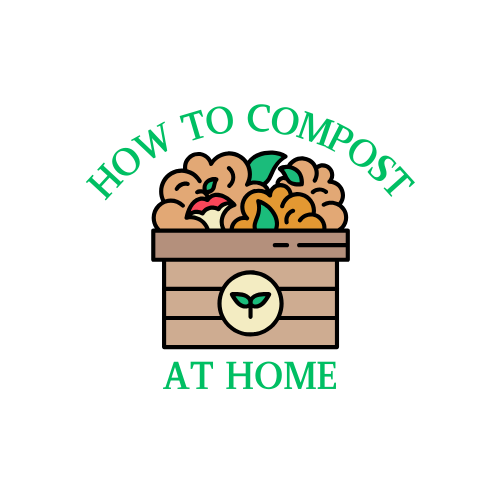Pros and Cons of Pre-Packaged Compost Starters
Stepping into the twilight zone of compost starters begs the question: to DIY or not to DIY?
That’s the gardening dilemma of the century, splitting paths between the ease of grabbing a pre-packaged miracle worker off the garden center shelf and the satisfaction of whipping up your very own concoction from kitchen and backyard treasures.
This inquiry isn’t just about aesthetics; it dives deep into the heart of efficiency, sustainability, and wallet-friendliness.
We unravel the pros and cons weaving through the decision to go pre-made or homemade, and crunch the numbers to see which avenue promises a greener future for your garden goals without draining your budget.
Benefits of Pre-Packaged vs. Homemade Starters
Embarking on the composting journey with a pre-packaged starter is like snapping up a first-class ticket: you’re paying for ease and a guaranteed spot on the express train to Compostville. These starters come armed with a meticulously balanced army of microorganisms ready to tackle your garden waste, turning your compost bin into a bustling diner for bacteria and fungi.
However, while convenience sits at the heart of this choice, so does a shadow of restraint: the magic in these bags comes at a price, and the tailored selection of decomposers might not be the perfect fit for every item in your garden’s banquet. Beyond the hit to your wallet, reliance on these engineered squads can whisper a tale of dependency, gently nudging your composting process into a walled garden of brand loyalty and proprietary blends.
How to Create an Effective Homemade Compost Starter
Whipping up a homemade compost starter is akin to brewing a magic elixir in your very own backyard. All you need is a generous sprinkle of garden soil, acting as a natural inoculation packed with local microorganisms, mixed with some freshly chopped garden waste to kick off the feast. Add this blend to your compost pile, and it acts like striking a match in a pile of dry leaves, igniting the decomposition process in no time.
The charm of creating your own compost starter lies in its sheer simplicity and the connection it fosters with your garden’s ecosystem. By using what you already have—leaves waiting to be raked, kitchen scraps longing for a purpose, and even a handful of existing compost to introduce a community of bacteria and fungi—you’re not just recycling organic matter, but cultivating a cycle of life that enriches every inch of your plot.
Cost-Efficiency Analysis for Long-Term Gardening
When gardening morphs from a hobby into a heartfelt saga of nurturing life, the question of cost-efficiency becomes a pivotal chapter. Choosing between pre-packaged and homemade compost starters isn’t just about the immediate impact on the wallet: it’s about weighing the dance of dollars and cents over seasons of growth and harvest. A pre-packaged starter might seem like a steal with its promise of quick results, but it’s the recurring purchases that can quietly eat into your gardening budget.
In the lush, green theatre of your backyard, where every plant, herb, and vegetable plays its part, opting for a homemade compost starter can emerge as the unsung hero of cost-efficiency. It’s a bit like turning your garden’s leftovers into a feast—where scraps and leaves transform into a bounty of rich soil—minimizing waste and maximizing resources. This alchemy not only curtails the need for external inputs but also fosters a cycle of growth and rebirth that’s as kind to your pocket as it is to the planet.
Reading and Interpreting Compost Starter Labels
Standing in front of a shelf of compost starters, each promising to transform your garden waste into black gold, can feel like deciphering an ancient script. It’s not just about picking a bag off the shelf; it’s diving into the nitty-gritty of what’s inside that bag that counts.
Peeling back the layers of technical jargon on compost starter labels is akin to unlocking a treasure chest of plant nutrition. We’ll help navigate the maze of application rates and methods, and shine a light on those sneaky red flags—ingredients that might do more harm than good.
Deciphering Key Ingredients and Their Benefits
Stepping into the role of a garden detective starts with a keen eye on the compost starter labels. It’s like unraveling a mystery, where each component from alfalfa to zeolite holds a clue about the nutrient buffet your compost will offer, ensuring your plant, tree, or shrub thrives.
Understanding the benefits of ingredients is akin to reading a map that leads to buried treasure. For instance, spotting ‘bacterial cultures’ whispers tales of speedy decomposition, while the mention of ‘carbon sources’ like straw or sawdust hints at a feast for microorganisms, setting the stage for a balanced community.
Understanding Application Rates and Methods
Navigating the back of a compost starter label to p out application rates and methods is like decoding a secret formula meant to conjure the perfect potion for your garden. Some starters direct a sprinkle per layer of green waste, setting a rhythm, a sort of composting choreography, guiding how and when to stir the pot to keep the microbial feast lively and efficient.
Understanding the method is akin to learning the right dance moves for a ballroom dance; each step, each swirl has its significance, intended to maximize the magic that turns everyday scraps into garden gold. Whether it calls for a heaping scoop every few inches or a meticulous mix throughout the pile, getting it right amplifies the starter’s power, fast-tracking the journey from kitchen scraps to garden nutrients.
Spotting Red Flags: Ingredients to Avoid in Starters
Walking through the maze of compost starters, it’s easy to get lost in the promises and claims. But, like deciphering a menu at a new eatery, spotting the not-so-good-for-your-garden ingredients is critical: artificial additives and chemicals that sound more at home in a science lab than in your backyard oasis should raise an eyebrow. These intruders can disrupt the delicate balance of your compost pile, turning a potential banquet into a less wholesome affair.
Moreover, beware of starters that tout miracle results with unspecified “proprietary blends.” The lack of transparency can mask fillers or ingredients that might be at odds with your garden’s health or, worse, detrimental to the microorganisms vital for composting magic.
Incorporating Compost Starters Into Your Composting Routine
Introducing compost starters into your routine isn’t just a toss-it-and-forget-it affair. It’s a craft, a science, and a bit of an art form, all wrapped in one. There’s a finesse to getting it just right.
Best Practices for Applying Compost Starters
Getting the application of compost starters just right is a bit like finding the secret ingredient that makes your garden’s heart beat faster. A sprinkle here, a layer there, and voila, you’ve set the stage for an alchemy that turns scraps into a lush paradise. Keeping an eye on the moisture and turning the pile occasionally helps the magic along, ensuring the microorganisms have everything they need to perform their decomposition dance.
But remember, each garden has its own personality, its unique rhythm that demands a bespoke approach. So, when flinging that compost activator into the mix, take a moment to consider the character of your heap. Is it dry and craving moisture, or wet and in need of more brown matter to balance things out? Tailoring your technique to the heap’s current state isn’t just smart; it’s an act of love, a whisper to your garden that you’re in tune with its needs.

Adjusting Starter Quantities Based on Compost Volume
Imagine your compost volume as a bustling metropolis, each pile, heap, or bin housing a diverse population of microbial inhabitants. Like any good city planner, you need to adjust the resources—your compost starter—based on the size and needs of your urban (or rather, garden) landscape: a small balcony compost bin might only require a dash of starter, while a sprawling backyard compost system will need a more generous sprinkle.
It’s all about getting the proportions right, akin to following a recipe that promises a perfect bake. Just as a baker adjusts the yeast based on the volume of flour, gardeners should tweak the amount of compost starter to the width and depth of their compost pile. Here’s a simple table to guide your green thumb:
| Compost Volume | Recommended Starter Quantity |
|---|---|
| Small (up to 1 cubic yard) | 1 cup of compost starter |
| Medium (1-3 cubic yards) | 2-3 cups of compost starter |
| Large (over 3 cubic yards) | 4 cups or according to product instructions |
Monitoring Compost Health After Starter Application
After dolling up your compost with that zesty starter, it’s crucial to become a bit of a compost detective, keeping your eyes peeled for signs of a happy or troubled pile. A thriving compost will warm up, as if it’s blushing with the effort of all those microorganisms breaking down organic matter into garden gold. If it starts smelling more like a gym locker than earthy soil, though, it’s time to reassess the balance of your compost ingredients.
Notice how the pile behaves through the seasons, particularly after introducing your chosen compost starter. It should be a lively hub of decomposition, not too dry or clumpy. If it resembles a dried-up riverbed or a swamp, adjustments in moisture and aeration may be needed. Keeping tabs on these subtle shifts allows your garden compost to flourish.
Recommended Composting Supplies
Compost Thermometers
Gardening Gloves
Outdoor Compost Bins
Indoor Compost Bins
